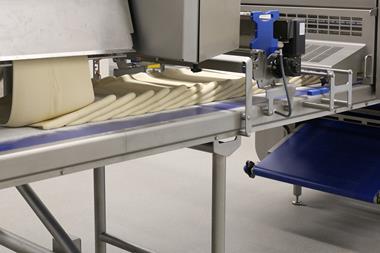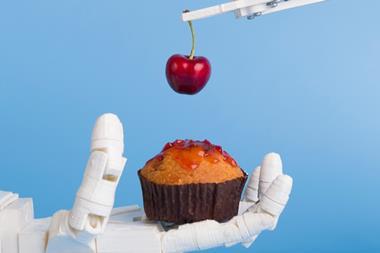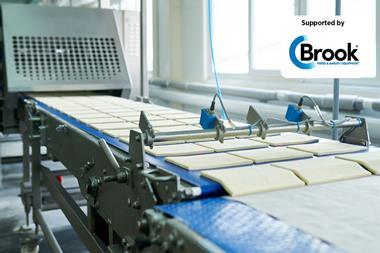With traceability an important element in production, bakers need to ensure they have a system that really answers their needs
Four years on from the horsemeat scandal, traceability remains high on the agenda for suppliers and retailers.
It may feel like a chore, but whether through spreadsheets, clipboards, software, or automated systems, production and supply data has to be logged in a way that can be referenced easily.
Potential fines from customers, Trading Standards prosecutions, delistings and negative media coverage are the ‘sticks’ that demand rigorous traceability measures are in place. But what about the ‘carrots’? What if upgrading your traceability systems could streamline production and save you money?
Mathew Simpson, UK sales head for CSB-System, says installing the software and practices necessary for traceability has many wider benefits for bakers.
“If you record accurately, you have the data to find out your actual production costs, including yield losses,” he notes. “This information might allow a business to reduce stock levels, home in on wastage and formulate more realistic prices. It might reveal certain products are not profitable.”
Capturing data electronically also makes it easier to store and retrieve for future use – either for traceability or commercial purposes, he notes.
But be warned, there are many generic software systems not designed for bakers, says Simpson. A system for warehouse management may not capture and deal with water loss in baking or a two-step recipe where, for example, a batch of icing is prepared separately and then used up over three different batches of buns. If the system cannot accommodate your process, then you will not achieve accurate traceability.
Toby Hawkins, non-exec director of RedBlack Software and SG Systems Europe, argues that you have to choose technology wisely. “Don’t invest in technology because it is cool; invest because it is a solution to a problem you have found in your business,” he says. “Look at the cost of issues such as ingredients going out of date, scrapped batches due to errors, and management time spent on paperwork. Stock and recipe control all come under the traceability umbrella.”
SG Systems Europe offers modular solutions for production monitoring equipment, paid for monthly on a contract in a similar way to a mobile phone. “As hardware becomes obsolete faster, this is the model for the future,” says Hawkins.
Meanwhile, David Marsh, director of Kaak Group UK, suggests smaller bakeries cannot really afford to invest in full supervisory control and data acquisition (SCADA) systems for traceability. Some suppliers integrate their production planning software with the front-end ingredient recipe systems; this provides an element of traceability as they can record the times recipes were implemented into production, quantities involved and duration.
A progressive small baker can afford these systems, which can then be extended to add data from the dough checkweigher, he says. “After dough make-up, traceability becomes more of a paper chase for the smaller baker,” adds Marsh. “Some ovens can be networked and product data regarding recipes added to the whole picture, but this assumes the oven is set for the proper product and that batch codes are added to its recipe data.”
In industrial bakeries, tin-recognition systems are in use, such as Kaak Group’s iBakeware, he says. Each tin or group of tins (straps) have a 3D laser tag, giving them a unique identity. The tin can then be tracked around the plant in real time.
Effective traceability systems can ensure product safety and production efficiency while protecting your business… and it could also save a little dough in the process.
Weighing up the benefits
Weighing is integral to accurate, robust traceability, and it is common practice to integrate weighing equipment with traceability systems.
It is possible to conduct traceability without weighing – but a business would not then be able to prove it used all of a given batch or knew where exactly a batch change took place.
BRC standards require manufacturers to perform ‘mass balance’ checks that demonstrate the recipe input quantities are equal to the delivered quantity of a given batch. So recipe quantities must be weighed out and recorded.
Most inline checkweighers will output data relating to product type, time and – of course – weight, recorded against the various criteria the weight has to meet.
For traceability, it is important the weigher is actually weighing the product type it is set to weigh.
Weighing equipment should be sited to be safe from bumps, free from excessive vibration and ergonomically placed for the operative. Calibration should only be carried out by the vendor or a qualified engineer. Testing with check-weights should be repeated on a daily basis.
But what is traceability?
It is ironic that no precise definition of traceability exists, even though it requires that all processes are fully defined. A supplier usually has to apply common sense, or follow buyer guidelines.
Traceability comes under non-statutory guidance in Article 18 of Regulation (EC) 178/2004 on General Food Law. In 2007, the FSA issued guidance notes, defining a traceability system as the totality of data and operations capable of maintaining desired information about a product and its components through all or part of its production and utilisation chain.
Many Private Voluntary Standards also cover traceability in the food supply chain.
The BRC Global Standard Food Safety (Issue 7) says a site should be able to trace all raw material products from suppliers through all stages of processing and dispatch to customers and vice versa.
Ishida handles sticky situation
Ishida has recently launched mid-range multihead weighers for weighing free-flowing and semi-sticky products.
The Ishida RVE range is available in formats including 10, 14, 16 and 20-head models and offers a selection of radial troughs, hoppers (from three to seven litres) and discharge chutes. Weighers can be tailored to individual product requirements, with models available for mono or mixed products that can handle up to four different products and multiple-outlet weighing, and from small to large target weights.
Key to the range’s performance, says Ishida, is the introduction of features including programmable digital filtering and advanced automatic feeder adjustment.
It adds that its RVE WP models offer a unique ‘dew sensor’ and ‘temperature sensor’ option for live monitoring of moisture or extreme temperatures during production.





























No comments yet